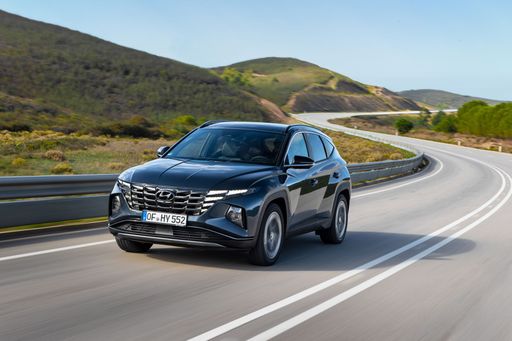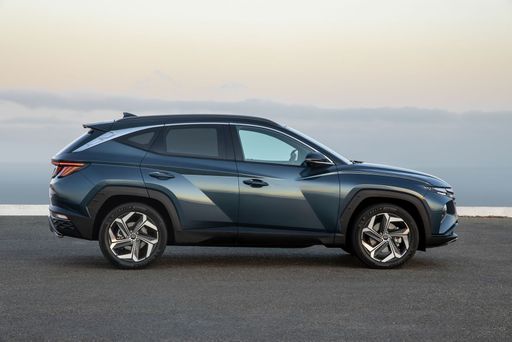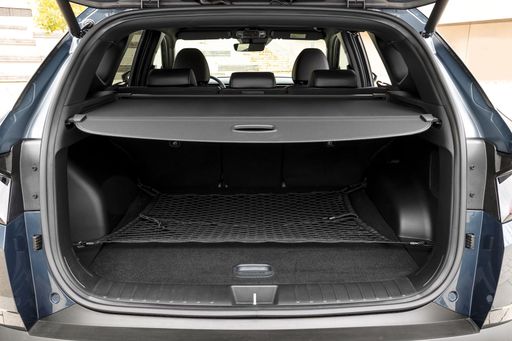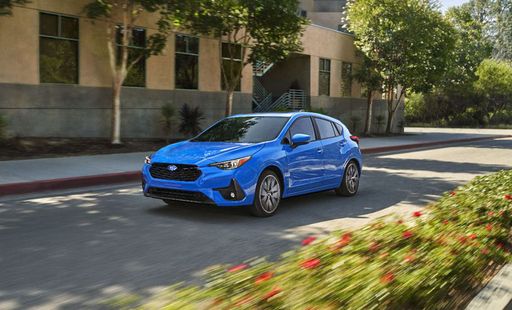Hyundai Tucson vs Subaru Impreza – Which model is better for everyday use?
Two cars, one duel: Hyundai Tucson meets Subaru Impreza.
Which one wins in performance, efficiency and value for money? Find out now!
Here’s where it gets real: The technical differences in detail
Costs and Efficiency: Price and efficiency are often the first things buyers look at. Here it becomes clear which model has the long-term edge – whether at the pump, the plug, or in purchase price.
Subaru Impreza has a hardly perceptible advantage in terms of price – it starts at 30200 £, while the Hyundai Tucson costs 30600 £. That’s a price difference of around 412 £.
Fuel consumption also shows a difference: the Hyundai Tucson manages with 1 L and is therefore decisively more efficient than the Subaru Impreza with 7.30 L. The difference is about 6.30 L per 100 km.
Engine and Performance: Power, torque and acceleration say a lot about how a car feels on the road. This is where you see which model delivers more driving dynamics.
When it comes to engine power, the Hyundai Tucson has a significantly edge – offering 252 HP compared to 136 HP. That’s roughly 116 HP more horsepower.
In acceleration from 0 to 100 km/h, the Hyundai Tucson is clearly perceptible quicker – completing the sprint in 7.90 s, while the Subaru Impreza takes 10.60 s. That’s about 2.70 s faster.
In terms of top speed, the Subaru Impreza performs barely noticeable better – reaching 199 km/h, while the Hyundai Tucson tops out at 194 km/h. The difference is around 5 km/h.
There’s also a difference in torque: the Hyundai Tucson pulls decisively stronger with 367 Nm compared to 182 Nm. That’s about 185 Nm difference.
Space and Everyday Use: Beyond pure performance, interior space and usability matter most in daily life. This is where you see which car is more practical and versatile.
Both vehicles offer seating for 5 people.
In curb weight, the Hyundai Tucson is hardly perceptible lighter – 1520 kg compared to 1574 kg. The difference is around 54 kg.
In terms of boot space, the Hyundai Tucson offers decisively more room – 620 L compared to 315 L. That’s a difference of about 305 L.
In maximum load capacity, the Hyundai Tucson performs noticeable better – up to 1799 L, which is about 485 L more than the Subaru Impreza.
When it comes to payload, Hyundai Tucson slight takes the win – 545 kg compared to 526 kg. That’s a difference of about 19 kg.
All in all, the Hyundai Tucson shows itself to be outperforms in nearly all aspects and secures the title of DriveDuel Champion.
It impresses with the more balanced overall package and proves to be the more versatile companion for everyday use.
Hyundai Tucson
The Hyundai Tucson is a standout choice in the compact SUV segment, offering a perfect blend of style, comfort, and practicality. Its modern design is complemented by a spacious interior that provides ample room for passengers and luggage alike. With advanced technology and safety features, the Tucson ensures a smooth and enjoyable driving experience.
details @ hyundai.news
@ hyundai.news
 @ hyundai.news
@ hyundai.news
 @ hyundai.news
@ hyundai.news
 @ hyundai.news
@ hyundai.news
 @ hyundai.news
@ hyundai.news
Subaru Impreza
The Subaru Impreza is renowned for its rally heritage, offering robust performance and standout handling capabilities on various terrains. Its distinctive symmetrical all-wheel-drive system provides drivers with enhanced control and stability, making it a favourite among enthusiasts. Inside, the car offers a well-appointed interior with a focus on comfort and advanced technology, ensuring a pleasant experience for both drivers and passengers.
details @ Subaru
@ Subaru

|

|
|
|
|
Costs and Consumption |
|
|---|---|
|
Price
30600 - 46300 £
|
Price
30200 - 32500 £
|
|
Consumption L/100km
1 - 6.9 L
|
Consumption L/100km
7.30 L
|
|
Consumption kWh/100km
-
|
Consumption kWh/100km
-
|
|
Electric Range
64 - 70 km
|
Electric Range
-
|
|
Battery Capacity
-
|
Battery Capacity
-
|
|
co2
22 - 156 g/km
|
co2
166 g/km
|
|
Fuel tank capacity
42 - 54 L
|
Fuel tank capacity
48 L
|
Dimensions and Body |
|
|---|---|
|
Body Type
SUV
|
Body Type
Hatchback
|
|
Seats
5
|
Seats
5
|
|
Doors
5
|
Doors
5
|
|
Curb weight
1520 - 1889 kg
|
Curb weight
1574 - 1599 kg
|
|
Trunk capacity
546 - 620 L
|
Trunk capacity
315 L
|
|
Length
4510 - 4520 mm
|
Length
4490 mm
|
|
Width
1865 mm
|
Width
1780 mm
|
|
Height
1650 mm
|
Height
1515 mm
|
|
Max trunk capacity
1721 - 1799 L
|
Max trunk capacity
1297 - 1314 L
|
|
Payload
525 - 545 kg
|
Payload
501 - 526 kg
|
Engine and Performance |
|
|---|---|
|
Engine Type
Diesel MHEV, Petrol MHEV, Petrol, Full Hybrid, Plugin Hybrid
|
Engine Type
Petrol MHEV
|
|
Transmission
Automatic, Manuel
|
Transmission
Automatic
|
|
Transmission Detail
Dual-Clutch Automatic, Manual Gearbox, Automatic Gearbox
|
Transmission Detail
CVT
|
|
Drive Type
Front-Wheel Drive, All-Wheel Drive
|
Drive Type
All-Wheel Drive
|
|
Power HP
136 - 252 HP
|
Power HP
136 HP
|
|
Acceleration 0-100km/h
7.9 - 11.6 s
|
Acceleration 0-100km/h
10.60 s
|
|
Max Speed
180 - 194 km/h
|
Max Speed
199 km/h
|
|
Torque
265 - 367 Nm
|
Torque
182 Nm
|
|
Number of Cylinders
4
|
Number of Cylinders
4
|
|
Power kW
100 - 185 kW
|
Power kW
100 kW
|
|
Engine capacity
1598 cm3
|
Engine capacity
1995 cm3
|
General |
|
|---|---|
|
Model Year
2024
|
Model Year
2024
|
|
CO2 Efficiency Class
E, F, D, B
|
CO2 Efficiency Class
F
|
|
Brand
Hyundai
|
Brand
Subaru
|
What drive types are available for the Hyundai Tucson?
Available configurations include Front-Wheel Drive or All-Wheel Drive.
The prices and data displayed are estimates based on German list prices and may vary by country. This information is not legally binding.
